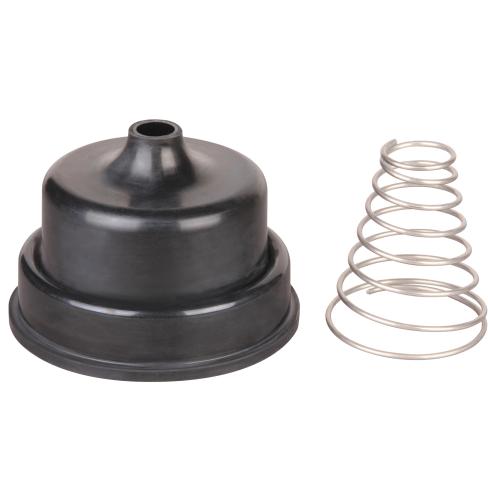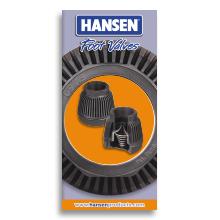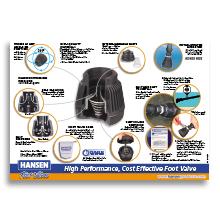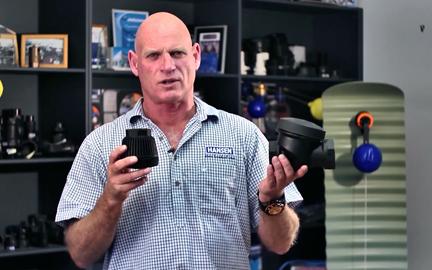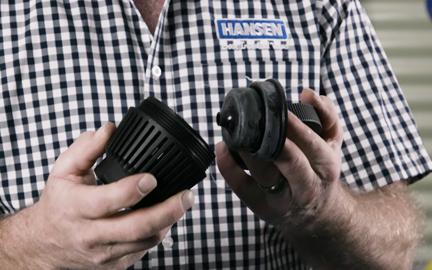40mm Hansen Foot Valve BSPT
Product
I have an existing water line with a 40mm valve on it and I want to replace the valve with a Hansen Valve. Do I use the same size valve as my existing one?
You will need to refer to the Choosing the Correct Foot or Check Valve Page under the Technical Info / Pressure & Flow Rates Tab of each valve product and use these charts to determine the valve size required. In some situations you may be able to use a smaller Hansen valve than your existing non Hansen valve.
Can I use my Hansen fittings with my swimming pool/spa pool set up?
No, as the high concentration of chlorine used in the water for pools will attack the material. The fitting material is only suitable for use with domestic water. Hansen products that are used in this application will not be covered by our limited lifetime warranty.
Can the Hansen Foot Valves be used with salt water passing through them?
The spring in the valves is made of 302 grade stainless steel, and may eventually corrode in the salt water. The spring is available as a replacement part if required. All other parts of the valve are fully resistant to salt water.
Do I have to remove my valve from the line to service?
No. Your valve can be left inline for servicing. Refer to Re-assembly instructions for further information.
How do I know what size valve to use?
Work out the flow of your pump (your pump installer/supplier can help you here) then refer to Choosing the correct Foot or Check Valve under the Technical Info / Pressure & Flow Rates Tab of each product.
I find my check valves too often not sealing, I’ve been told I should have a filter upstream of the valve, is this the same with the Hansen Check Valve?
All check valves should be screened upstream. The advantage of the Hansen Check Valve is that they can be serviced in line if your water is dirty.
I have noticed that the Hansen Check Valve has a screw top, does that mean it can be serviced inline?
Yes, the Hansen Check Valve can be serviced inline and any parts replaced if required.
The dam I’m pumping from can get quite dirty at times, including some slime and weed. I find my existing foot valve requires constant cleaning. Will the Hansen Foot Valve solve this problem?
Yes the Hansen Foot Valve has been designed with the ability to work in dirty water situations and because of lower head losses of this valve you can select a smaller size than you normally would expect, thus with the higher velocities across the diaphragm the valve becomes self-cleaning.
The river I pump from is fairly shallow so I do pump some sand at times and find my existing Foot Valves have to be replaced often. Is the Hansen Foot Valve also a throw away valve?
No, although pumping sand is unadvisable because of the damage to your pump. You will find with the screw cap service access to the Hansen Foot Valve you only need to replace the parts that wear in these circumstances. Another suggestion would be because the Hansen Foot Valve can be installed at any angle you may be able to install the Hansen foot valve vertically above your suction pipe and keep it above the sand.
What temperature can I use Hansen Foot or Check Valve at?
Hansen have tested all its products for use with cold water up to a maximum temperature of 60°C (140°F). We do not recommend the use of these products with temperatures higher than 60°C (140°F) as plastic expands due to temperature increases. Hansen cannot guarantee the products will perform when used with temperatures over 60°C (140°F). Hansen products that have failed in temperatures higher than 60°C (140°F) will not be covered by our limited lifetime warranty.
When choosing my Foot Valve do I select a valve size to match the suction pipe diameter?
No not necessarily, again because of the higher flow efficiencies of the Hansen Foot Valve you match your flow with the head loss your pump can afford, generally you will find the Hansen Foot Valve size will be less than the pipe diameter. To choose the correct sized valve for your application, refer to the Choosing the Correct Foot or Check Valve Page under the Technical Info / Pressure & Flow Rates Tab of each product.
Why won’t my valve seal?
1. There may be something sitting between the diaphragm and diaphragm seating area. Pull the valve apart and clean out (replace diaphragm if damaged) as per assembly instructions.
2. Check to ensure that you are using the correct size valve for your situation (see choosing the correct foot valve or check valve).




